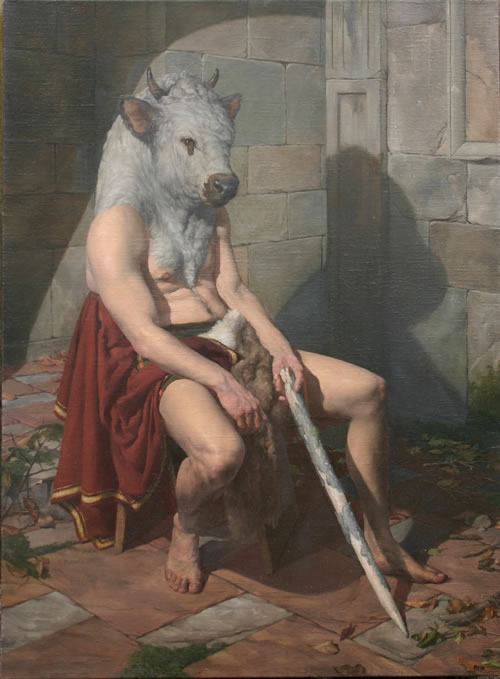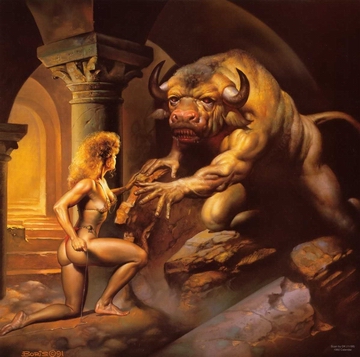In
Greek mythology, the Minotaur (Greek:
Μῑνώταυρος) was a creature
that was part man and part bull. It dwelt at the center of the Labyrinth, which
was an elaborate maze-like construction built for King Minos of Crete and
designed by the architect Daedalus and his son Icarus who were ordered to build
it to hold the Minotaur. The historical site of Knossos is usually identified as
the site of the labyrinth. The Minotaur was eventually killed by Theseus.
“Minotaur”
is Greek for “Bull of Minos.” The bull was known in Crete as Asterion, a
name shared with Minos’s foster father.
After
he ascended the throne of Crete, Minos struggled with his brothers for the right
to rule. Minos prayed to Poseidon to send him a snow-white bull, as a sign of
approval. He was to sacrifice the bull in honor of Poseidon but decided to keep
it instead because of its beauty. To punish Minos, Poseidon caused Pasiphaë,
Minos’ wife, to fall madly in love with the bull from the sea, the Cretan
Bull. She had Daedalus, the famous architect, make a wooden cow for her. Pasiphaë
climbed into the decoy in order to copulate with the white bull. The offspring
of their coupling was a monster called the Minotaur.

Minotaur,
oil on canvas by Paul Reid, 2005
Nowhere
has the essence of the myth been expressed more succinctly than in the Heroides
attributed to Ovid, where Pasiphaë’s daughter complains of the curse of her
unrequited love: “the bull’s form disguised the god, Pasiphaë, my mother, a
victim of the deluded bull, brought forth in travail her reproach and burden.”
Literalist and prurient readings that emphasize the machinery of literal
copulation may intentionally obscure the mystic marriage of the god in bull
form, a Minoan mythos alien to the Greeks.
The
Minotaur, as the Greeks imagined him, had the body of a man and the head and
tail of a bull. Pasiphaë nursed him in his infancy, but he grew and became
ferocious. Minos, after getting advice from the Oracle at Delphi, had Daedalus
construct a gigantic labyrinth to hold the Minotaur. Its location was near Minos’
palace in Knossos.
